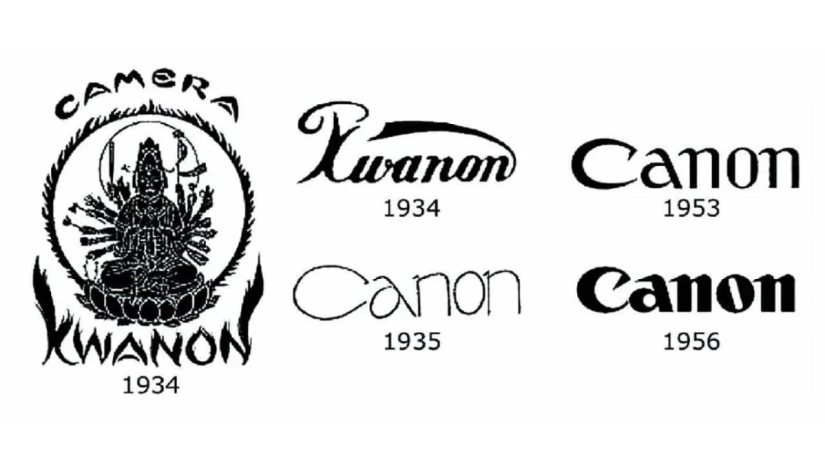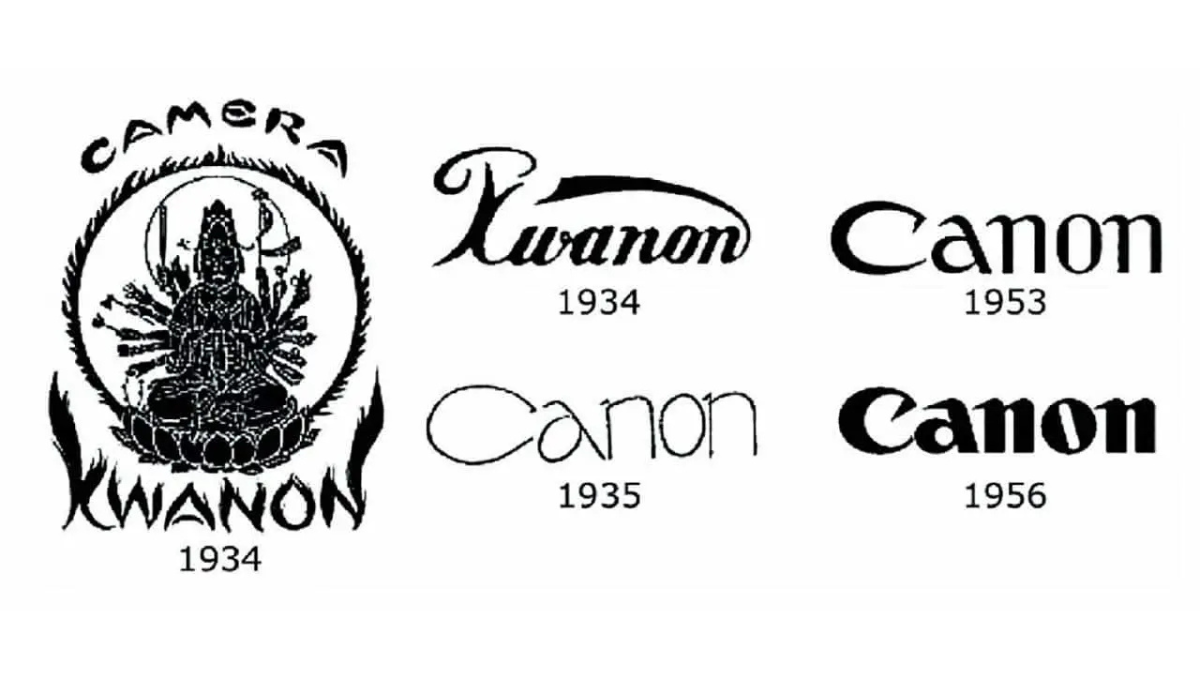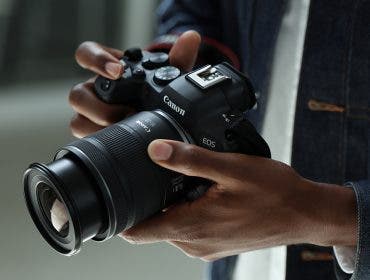Canon has played a pivotal role in shaping camera technology for over nine decades. It began as a small group of engineers seeking to build a Japanese alternative to Leica. However, Canon soon evolved into one of the world’s most innovative imaging companies. Canon has consistently pushed creative and technological boundaries, delivering groundbreaking solutions in both consumer and professional photography. They pioneered autofocus systems and introduced the microprocessor to SLRs. Canon soon dominated the DSLR era and is now leading the full-frame mirrorless revolution. In short, they redefined what photographers expect from their gear. Its innovations in optics, autofocus speed, sensor design, and video capabilities have made it a cornerstone in the photography, broadcasting, and cinema industries worldwide. Today, Canon Camera remains synonymous with precision, performance, and a deep commitment to advancing the art of image-making.
Hansa Canon (1936): Canon’s First Camera
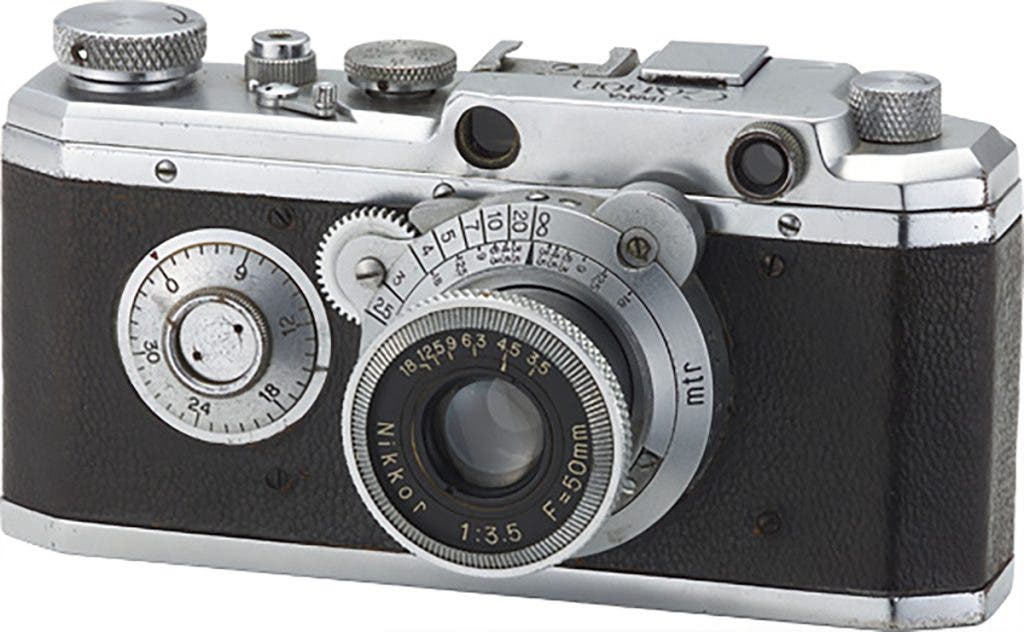
Canon’s story began in 1933 when a team of Japanese engineers, inspired by German rangefinders like Leica and Contax, founded the Precision Optical Instruments Laboratory in Tokyo. Their goal was to create Japan’s first 35mm focal-plane shutter camera. In 1934, they unveiled the prototype “Kwanon,” named after the Buddhist goddess of mercy. Though the Kwanon was never released commercially, it marked a symbolic start for Canon’s pursuit of photographic excellence.
The company’s first commercial product came in 1936 with the release of the Hansa Canon. This camera, developed in collaboration with Nippon Kogaku (later Nikon), used Nikon lenses and a rangefinder developed by Seiki Kogaku. The Hansa Canon adopted a design that closely resembled Leica cameras but with uniquely Japanese engineering solutions. It laid the groundwork for what would become a hallmark of Canon’s philosophy: building cameras that balance European quality standards with innovation and accessibility.
Though wartime halted production and progress temporarily, Canon’s early efforts showed its capacity for quality, precision, and international potential.
Canon IV Sb (1952): Post-War Growth
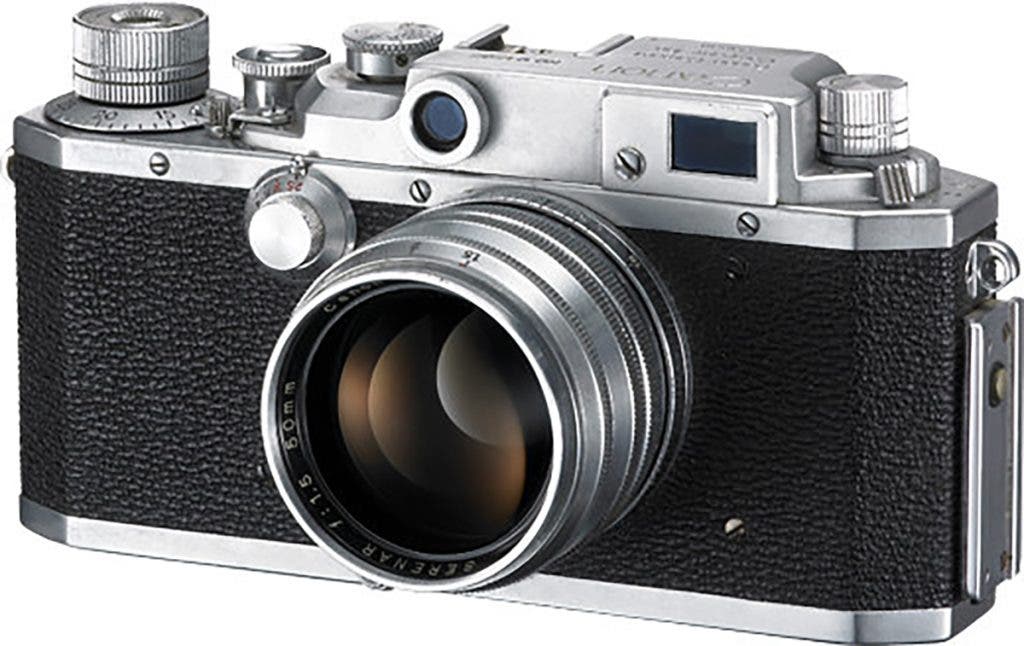
After World War II, Canon quickly resumed development and manufacturing, responding to Japan’s economic resurgence and growing global demand for high-quality cameras. The release of the Canon IV Sb in 1952 marked a turning point. This model was among the first Canon cameras to use flash synchronization and introduced a more ergonomic body design. It was a refinement of earlier rangefinder designs and set a new standard for reliability and usability in the consumer camera market.
Crucially, the Canon IV Sb was also one of the first cameras Canon exported to the United States. It served as the foundation for Canon’s expansion into global markets, particularly after the company opened its first overseas office in New York in 1955. This move was critical in solidifying Canon’s presence in the West and positioned the brand as a viable alternative to established European makers.
At a time when many Japanese manufacturers were still finding their footing, Canon proved it could match the best—and, in many cases, offer superior value. The IV Sb series laid the foundation for the company’s transition from rangefinders to SLRs.
Canon F-1 (1971): The Professional Leap
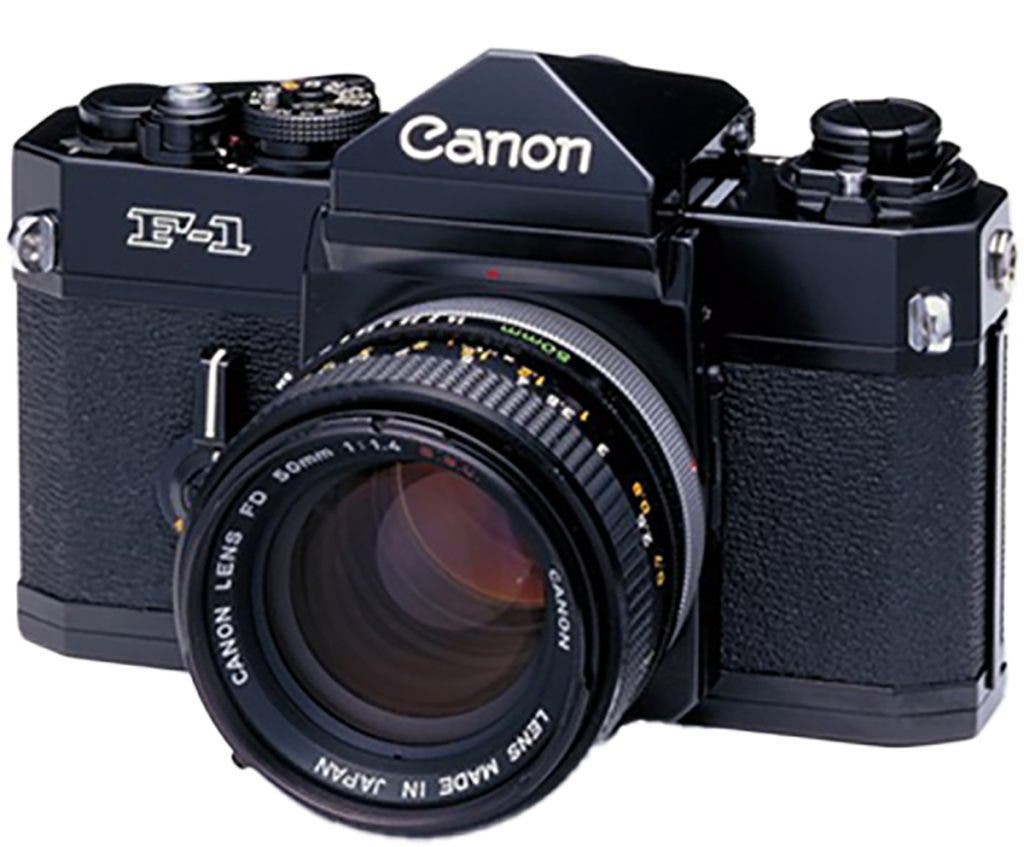
In 1971, Canon entered the professional SLR market with the release of the Canon F-1, a high-performance 35mm film camera designed to compete directly with Nikon’s F-series. Built for durability and precision, the F-1 was modular in design, offering interchangeable viewfinders, focusing screens, motor drives, and data backs.
It was the first Canon camera to use the FD lens mount, which allowed full-aperture metering—a technological leap that improved exposure accuracy. With its solid brass construction, the F-1 was aimed squarely at professional photojournalists, sports photographers, and studio professionals. Canon’s sponsorship of the 1976 Montreal Olympics gave the F-1 international visibility and validated its reliability under extreme conditions.
This model also marked Canon’s shift toward becoming a serious contender in professional photography. The system’s expandability and precision gave professionals the flexibility they needed, and the growing FD lens lineup ensured optical versatility. The F-1 established Canon as more than just a consumer brand and was the start of a long tradition of professional-grade camera systems that would evolve into today’s EOS R and Cinema EOS series.
Canon AE-1 (1976): Technological Revolution
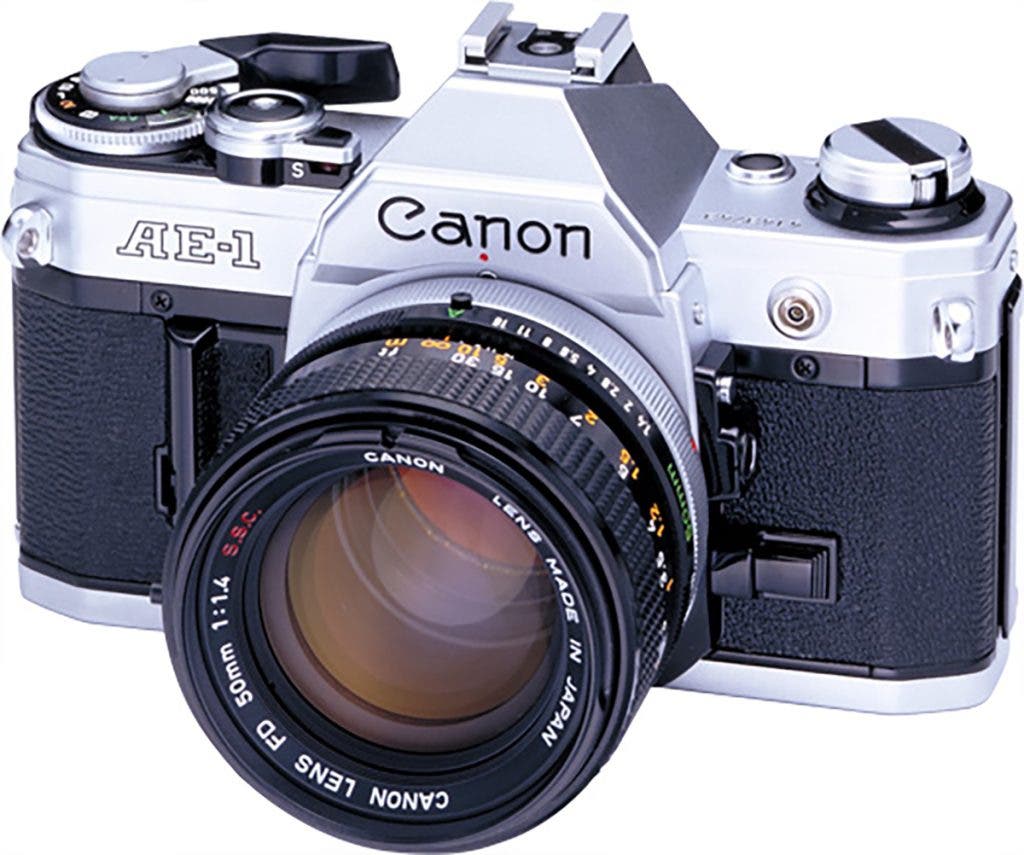
Canon shook the industry with the AE-1 in 1976—and decades later, my personal creative universe when I purchased it, my first “real” camera. The AE-1 was the world’s first 35mm SLR camera equipped with a built-in microprocessor. This landmark innovation brought automation and precision to a broader audience by introducing shutter-priority auto-exposure and digital control at a time when most SLRs were fully mechanical.
The design of the AE-1 made high-quality photography more accessible to amateur photographers and budding professionals learning the fundamentals like I was. Its compact body, intuitive controls, and affordable price point helped Canon sell over five million units worldwide—a staggering number for the time. Its FD lens compatibility also gave users access to a growing ecosystem of Canon optics, further strengthening customer loyalty.
Marketing played a huge role in its success. Canon ran massive advertising campaigns featuring celebrities and athletes, positioning the AE-1 as the camera for the everyday person. This model not only democratized photography but also established Canon as a dominant force in both professional and consumer markets. The AE-1 proved that incorporating cutting-edge technology didn’t have to mean complexity or high cost—a philosophy that continues to inform Canon’s design ethos to this day.
PowerShot 600 (1996) and EOS D30 (2000): Canon’s Digital Dawn
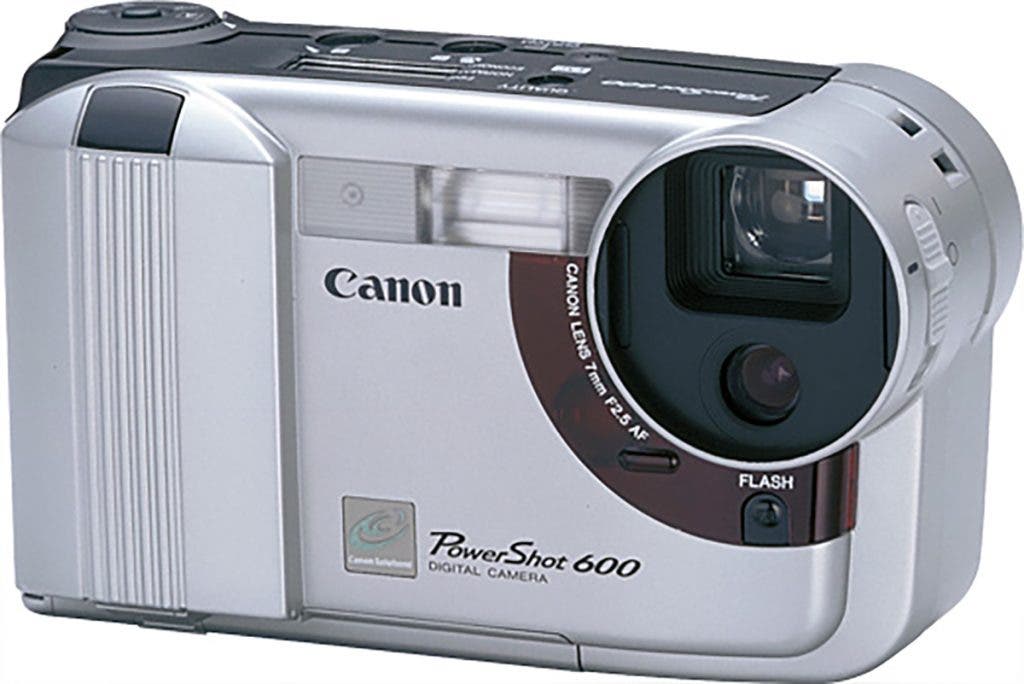
Canon entered the digital era with the PowerShot 600 in 1996, an early consumer digital camera with a modest 0.3-megapixel sensor. While limited in resolution, it marked Canon’s commitment to exploring digital imaging. More significant was the 2000 release of the EOS D30, Canon’s first digital SLR fully developed in-house.
The D30 featured a 3.1 MP APS-C CMOS sensor, distinguishing itself from competitors using CCD sensors. Canon’s investment in CMOS technology would eventually give it a lead in sensor performance, particularly in low light and power efficiency. The D30 was aimed at serious enthusiasts and professionals transitioning from film, and it laid the groundwork for Canon’s dominance in the DSLR market throughout the 2000s.
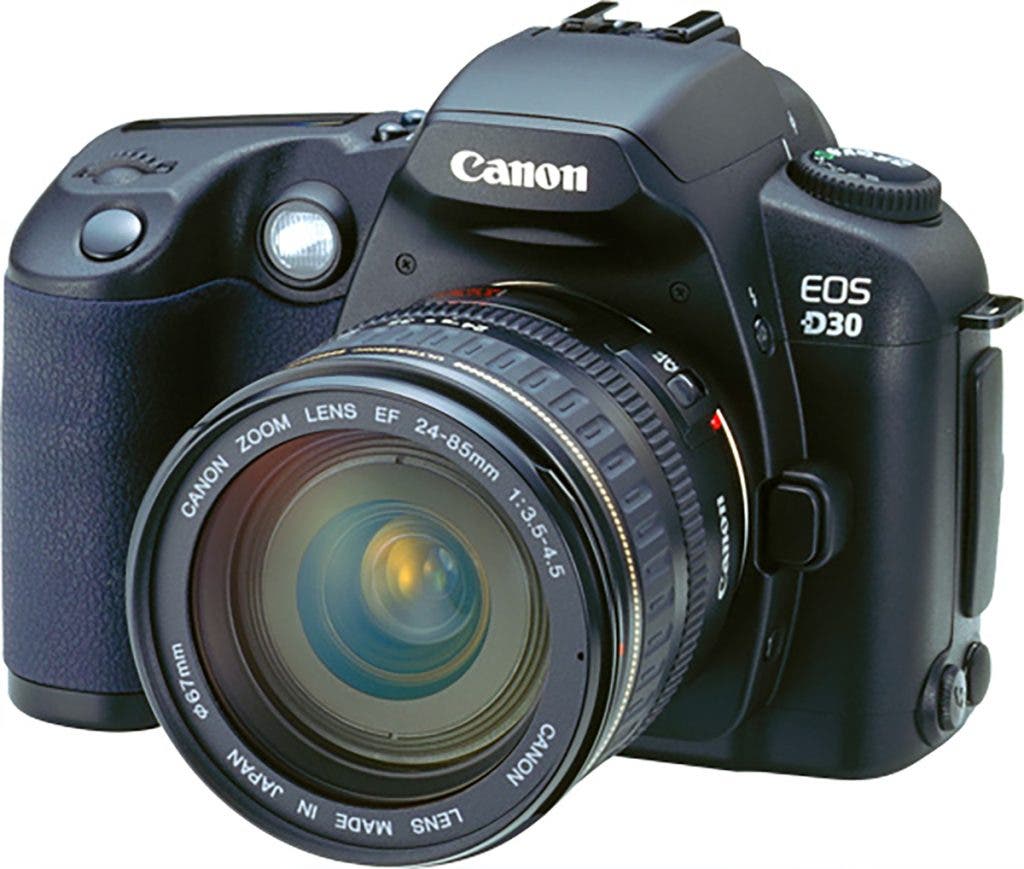
Subsequent releases like the EOS 10D, 20D, and the extremely popular EOS 5D series brought full-frame digital imaging to the masses. Meanwhile, Canon also expanded into high-end video with its Cinema EOS line, gaining traction among filmmakers. These digital milestones showed that Canon could not only keep up with industry shifts but lead them—a pattern that continues in the mirrorless age.
EOS R5 Mark II (2024): The Flagship
Today, Canon’s flagship mirrorless camera is the EOS R5 Mark II, a full-frame powerhouse built on the RF-mount system. This successor to the acclaimed EOS R5 brings a 45-megapixel stacked CMOS sensor, enhanced by dual processors—the DIGIC X and a new DIGIC Accelerator. This setup enables advanced in-camera AI upscaling to 180 MP resolution, a feature that caters to commercial photographers and wildlife shooters needing high-detail cropping.
Its autofocus system is equally impressive, boasting over 1,000 focus zones with AI-based subject detection that recognizes humans, animals, vehicles, and even insects. With 30 frames per second continuous shooting, 8.5 stops of image stabilization, and 8K internal RAW video recording, the R5 Mark II is designed for hybrid creators who demand top-tier performance in both stills and video.
Durability, heat management, and intuitive controls round out its professional features. Combined with Canon’s expanding line of high-performance RF lenses, the R5 Mark II represents the brand’s commitment to staying at the forefront of imaging technology while providing reliability and creative freedom.
A Legacy of Innovation and Excellence

Canon’s evolution from a small Tokyo-based startup to a global imaging leader is a story of relentless innovation and visionary thinking. From the handcrafted Kwanon prototype to the ultramodern EOS R5 Mark II, Canon has remained focused on delivering high-performance tools for storytellers of every generation.
Over the decades, Canon has introduced breakthroughs in optics, automation, sensor design, and video capability. Its cameras have covered the Olympic Games, historical events, wars, personal memories, and everything in between. Canon democratized photography with models like the AE-1 and then elevated it with the F-1 and EOS-1D series. Its foray into digital imaging revolutionized how we think about photography and videography, and its current RF-mount mirrorless systems are redefining the boundaries of creative expression.
Through it all, Canon has stayed true to its mission: to help people capture and preserve the world around them with clarity, creativity, and confidence. (I know I, personally, owe Canon a debt of gratitude.) In a constantly changing industry, Canon continues to lead—not by following trends, but by setting them. Its story is far from over, but its legacy is already etched into the history of photography.
Sources
https://global.canon/en/c-museum
https://en.wikipedia.org/wiki/Canon_Inc.
https://www.adorama.com/alc/first-look-canon-eos-r5-mark-ii
